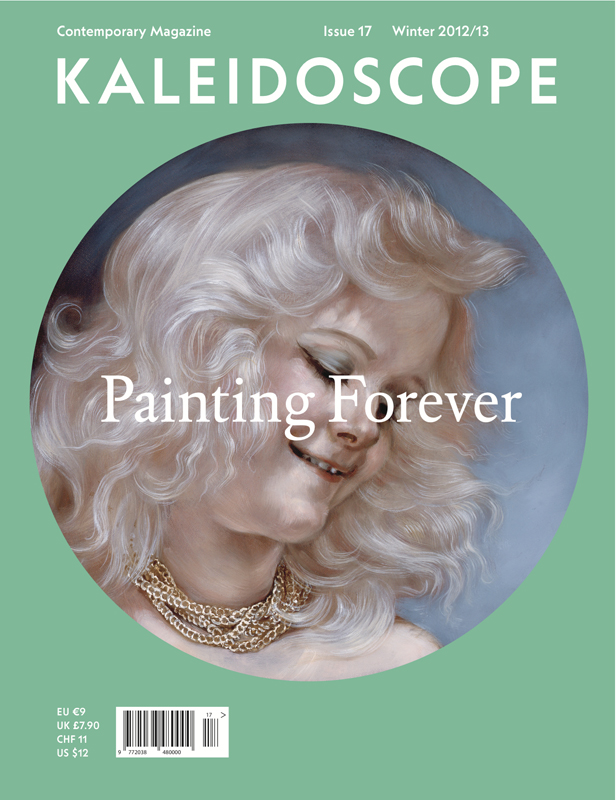
KALEIDOSCOPE Magazine 17, Painting Forever
Winter 2012/2013 — Painting Special Edition
Softcover, 224 pp. + three commissioned inserts, offset 4/4, 220 x 287 mm
ISSN 2038-4807
Published by KALEIDOSCOPE Press
$12.00 ·
“Painting Forever” is a special edition of KALEIDOSCOPE entirely dedicated to the past, present and future of the medium. The most persistent of art forms — one that was once given up for dead, then revived and is now more alive than ever — painting has been at the core of an intense research process that we undertook in collaboration with writers, curators and artists of different origins, beliefs and generations, all of whom share a desire to examine its history and envision its forthcoming possibilities. The questions we asked, and asked ourselves, were: Which artists are practicing painting in a relevant way today? Which conceptual and formal strategies, which modes of presentation and diffusion, do they deploy? And, ultimately, why? What are contemporary painters’ motives, references and perspectives? This issue is the tentative answer, and one which will hopefully foster further debate.
HIGHLIGHTS
In the opening section we introduce you to the work of five emerging artists: Oscar Murillo, Ryan Sullivan, Allison Katz, Jonathan Binet and Tala Madani. All born in the 1980s in different parts of the world, they’ve chosen to explore, revisit, celebrate and challenge the idea and practice of painting, with a common spirit of engagement and varying degrees of irony and irreverence.
MAIN THEME
This section, on the other hand, consists of extensive conversations with four artists born between the late 1950s and the early 1960s — Heimo Zoberning, John Currin, Amy Sillman and Michael Krebber — who represent divergent yet equally prominent and visionary approaches to the medium. Their common ground most revealingly lies in the influence they exert on a younger generation of artists. Accordingly, it’s no surprise that three of them hold teaching positions at eminent art schools, including the Academy of Fine Arts in Wien, Columbia University in New York and the Städelschule in Frankfurt.
MONO
This issue is likewise devoted to a painter, Los Angeles-based artist Dianna Molzan, whose practice occupies the liminal space between two-and three-dimensionality, between “pictures” and “objects,” and whose works convey a sophisticated research on abstraction encompassing elements drawn from the history of painting, as well as from design, fashion and visual culture at large.
REGULARS
This section features the work of NY–based artist Nikolas Gambaroff and of Italian conceptualist Giorgio Griffa, alongside discussions with the director of a prestigious foundation dedicated to the legacy of Pablo Picasso and the curators of an ambitious group exhibition, “Painter Painter,” soon to open at the Walker Art Center in Minneapolis.
INSERTS
Finally, this issue is enriched with commissioned inserts by three exciting young artists — Marieta Chirulescu, Fredrik Værslev and Keegan McHargue — that have each contributed a unique and affecting visual take on the making and experiencing of painting today.
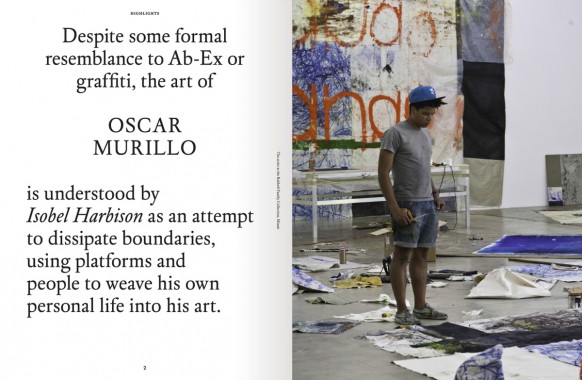
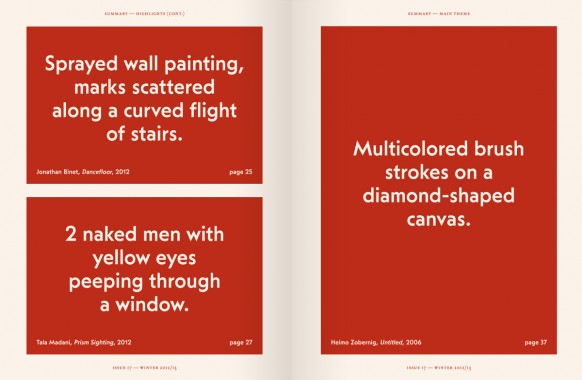
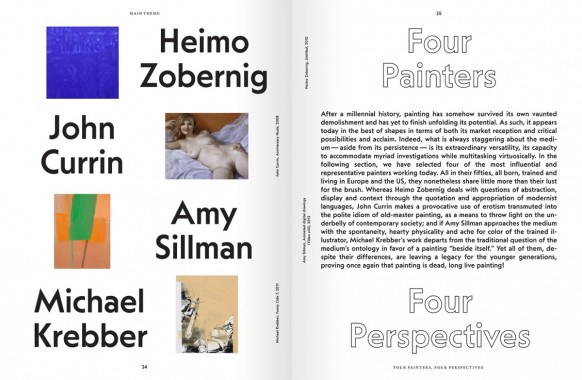
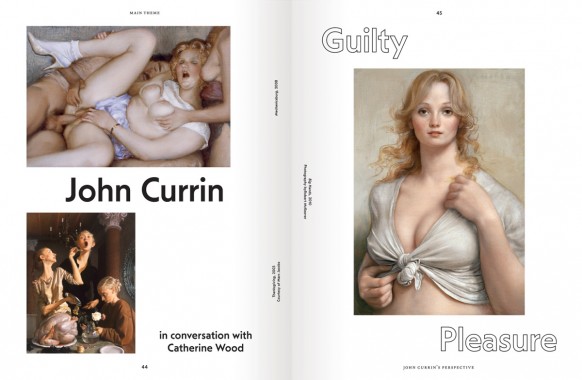
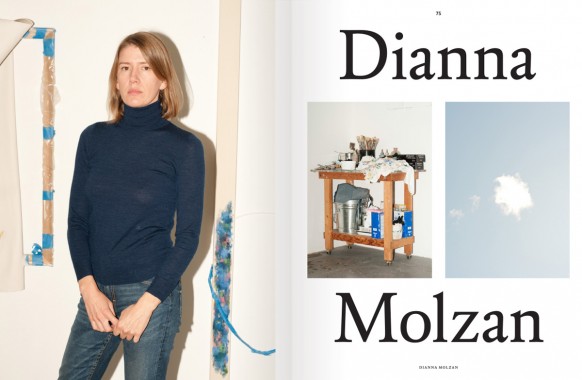
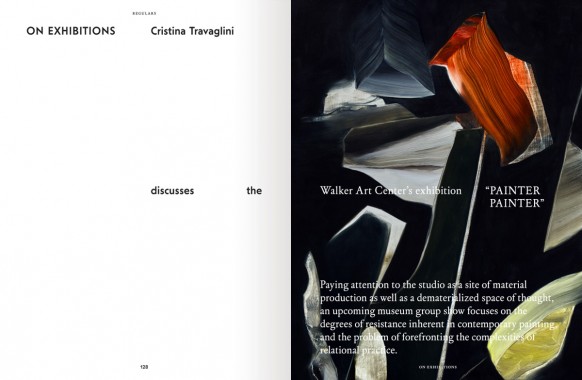
Allison Katz, Amy Sillman, Art, Cristina Travaglini, Culture, Dianna Molzan, Distribution, Fredrik Værslev, Giorgio Griffa, Heimo Zoberning, John Currin, Jonathan Binet, KALEIDOSCOPE Press, Keegan McHargue, Marieta Chirulescu, Michael Krebber, Nikolas Gambaroff, Oscar Murillo, Pablo Picasso, Painting, Ryan Sullivan, Tala Madani, Walker Art Center
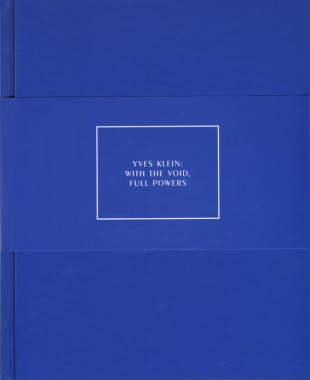
Kerry Brougher and Philippe Vergne, Yves Klein: With The Void, Full Powers
Hardcover, 352 pp., offset 4/4, 8 x 10 inches
Edition of 5000
ISBN 978-0-935640-94-6
Published by Walker Art Center
$65.00 ·
Yves Klein: With the Void, Full Powers is published to accompany the first major retrospective of the artist’s work in the United States in nearly 30 years. It includes examples from all of Klein’s major series, including his Anthropometries, Cosmogonies, fire paintings, planetary reliefs and blue monochromes, as well as selections of his lesser-known gold and pink monochromes, body and sponge reliefs, “air architecture” and immaterial works. Essays by curators Kerry Brougher and Philippe Vergne, Klein scholar Klaus Ottmann, art historian Kaira M. Cabañas and curatorial fellow Andria Hickey, as well as archival materials and translations of Klein’s published and unpublished writings, offer insights into the artist’s endeavors and process. Born in Nice, France, in 1928, Yves Klein created what he considered his first artwork when he signed the sky above Nice in 1947, making his earliest attempt to capture the immaterial. The artist carved out new aesthetic and theoretical territory based on his study of the mystical sect Rosicrucianism, philosophical and poetic investigations of space and science, and the practice of Judo, which he described as “the discovery of the human body in a spiritual space.”
Andrew Blauvelt, Andria Hickey, Architecture, Art, Dante Hong Carlos, DAP, Deborah Horowitz, Hatje Cantz, Hirshhorn Museum, Kaira M. Cabañas, Kerry Brougher, Klaus Ottmann, Lisa Middag, Philippe Vergne, Theory, Walker Art Center, Yves Klein
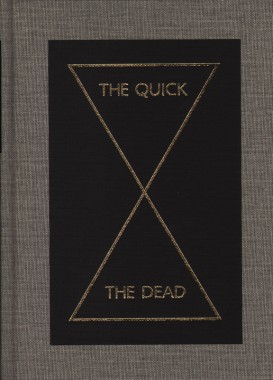
Peter Eleey, The Quick and the Dead
Hardcover, 352 pp., offset 4/1, 6.75 x 9 inches
Edition of 2000
ISBN 9780935640939
Published by Walker Art Center
$45.00 ·
Artists have always used their imaginations to see beyond visible matter — to posit other physics, other energies, new ways of conceiving the visible and new models for art — but the past century has seen an explosion of such investigations. In the fashion of a Wunderkammer, The Quick and the Dead takes stock of the 1960s and 70s legacy of experimental, or “research” art by pioneers like George Brecht, who posited objects as motionless events and asked us to consider “an art verging on the non-existent, dissolving into other dimensions,” and Lygia Clark, whose foldable sculptures sought to dissolve the boundary between inside and outside, each “a static moment within the cosmological dynamics from which we came and to which we are going.” In a series of encounters with art made strange by its expansions, contractions, inversions and implosions in time and space, The Quick and the Dead surveys more than 80 works by a global, multigenerational group of 50 artists, scientists and musicians — among them James Lee Byars, Joseph Beuys, Marcel Duchamp, Harold Edgerton, Ceal Floyer, Felix Gonzalez-Torres, Pierre Huyghe, The Institute for Figuring, Paul Ramirez Jonas, Stephen Kaltenbach, On Kawara, Christine Kozlov, David Lamelas, Louise Lawler, Paul Etienne Lincoln, Mark Manders, Kris Martin, Steve McQueen, Helen Mirra, Catherine Murphy, Bruce Nauman, Rivane Neuenschwander, Claes Oldenburg, Roman Ondák, Adrian Piper, Roman Signer and Shomei Tomatsu, among many others. Includes reprints of texts by diverse luminaries such as John McPhee, Jalal Toufic, Oliver Sacks, Allan Kaprow and Robert Smithson.
Adrian Piper, Art, Bruce Nauman, Catherine Murphy, Ceal Floyer, Christine Kozlov, Claes Oldenburg, DAP, David Lamelas, Felix Gonzalez-Torres, Harold Edgerton, Helen Mirra, James Lee Byars, Joseph Beuys, Kris Martin, Louise Lawler, Marcel Duchamp, Mark Manders, On Kawara, Paul Etienne Lincoln, Paul Ramirez Jonas, Peter Eleey, Pierre Huyghe, Rivane Neuenschwander, Roman Ondák, Roman Signer, Shomei Tomatsu, Stephen Kaltenbach, Steve McQueen, The Institute for Figuring, Walker Art Center








